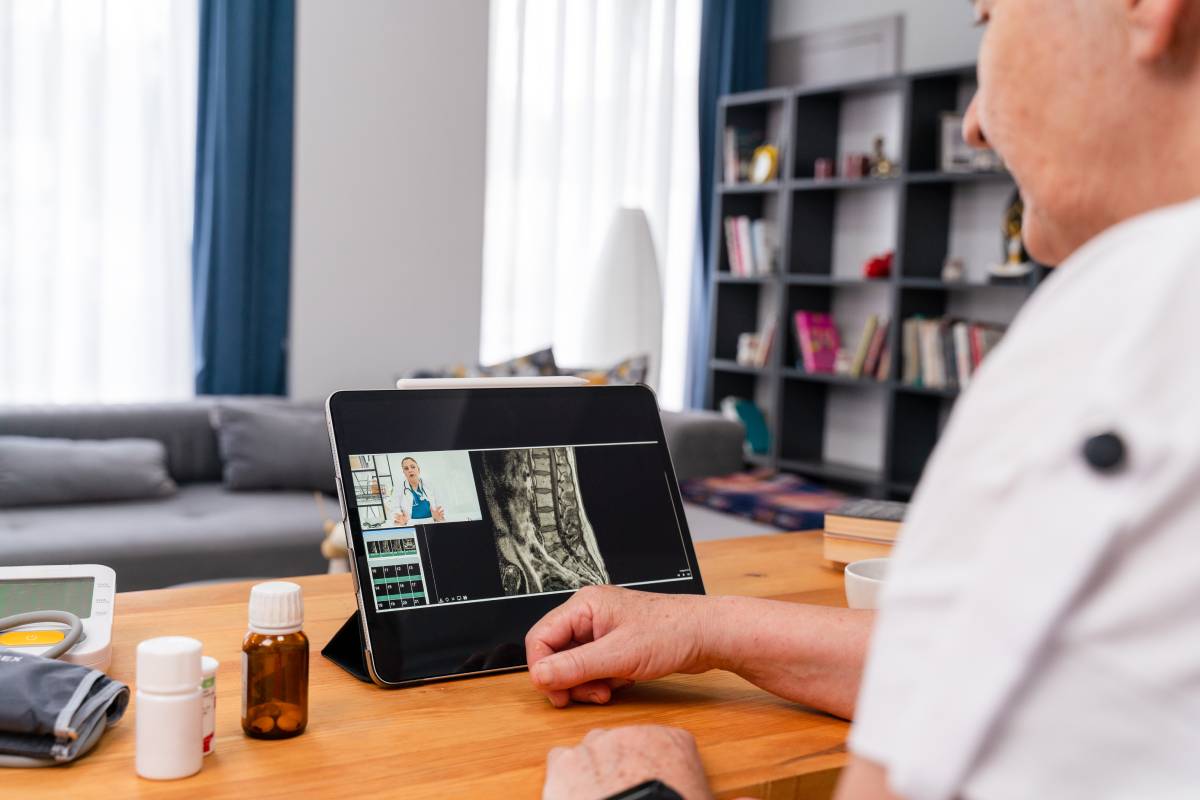Spinal cord stimulation implants are an important tool in the treatment of chronic neuropathic pain. They are designed to relieve pain while generating a low complication rate; however, due to their surgical nature, they are reserved for patients who do not respond well to more conventional treatments (such as pharmacology) [1]. Ideally, the patient will experience long-lasting pain relief after stimulator implantation. Though this device can be highly effective for patients, a drawback of the spinal cord stimulator implant is that it requires specific considerations for anesthesia and surgery.
These implants can be placed in all four zones of the spinal cord (e.g. within the levels of the cervical, thoracic, lumbar, and sacral vertebrae). They work by electrically stimulating the spinothalamic tract, which is the main pathway of information from the peripheral nervous system to the brain. In the case of chronic pain, this tract becomes dysregulated [2]. An implant suppresses neuronal activity within the dorsal horn of the spinal cord, reducing the perceived pain [3]. Implantation is generally achieved through either needle-based percutaneous entry to the epidural space or open laminectomy (which involves surgery to remove the roof of the spinal canal in each vertebra) [4].
The efficacy of these devices comes with specific requirements. Although pacemakers and cardiac defibrillators are generally compatible with stimulator implants, having one or having a history of having one requires approval by the patient’s cardiologist before they receive a stimulation implant [5]. Active infection, severe thrombocytopenia or other significant blood-related issues are several other criteria for not receiving an implant. Percutaneous trials before permanent implantation can be done with just a local anesthetic; however, the surgical procedure for a spinal cord stimulator implant requires operative anesthesia care and an attentive anesthesiologist. When inserting the surgical leads (these function as electrodes), spinal anesthesia such as bupivacaine is generally used. Because general anesthesia has relatively higher risks, it is typically a last resort.
In 2017, a systematic review examined 55 studies on spinal cord stimulator implants, discussing patients with these implants at various stages of the care continuum. When a patient with a spinal cord stimulator implant presents for anesthesia after implantation, it is recommended to turn their device to the lowest possible amplitude and then turn it completely off before anesthesia administration. This ensures if the device were to be accidentally switched on perioperatively, stimulation would be very low and would not interfere with operating procedures [4]. In the case of obstetric anesthesia, the anesthesiologist choosing between epidural and spinal anesthesia must consider the desired anesthetic outcome for that patient. For example, epidural anesthesia is unlikely to induce migration of spinal cord stimulator wires, since it creates fiber bundles which protect parts of the spinal cord. On the other hand, those same fiber bundles reduce anesthetic speed and could result in incomplete analgesia for labor or anesthesia for delivery. Regardless, the risk of damage is drastically reduced with prior knowledge and understanding of the implant location, technique used, and anesthetic plan [4].
Spinal cord stimulator implantation is a well-established therapeutic intervention for patients with chronic pain who are unresponsive to more conventional treatments. Before and during implantation, the anesthesia care team should consider the patient’s needs and how they might respond to different stimulation intensities. After implantation, anesthesiologists should monitor patients closely to assess the interactions between the spinal cord stimulator implant and anesthesia during further procedures.
References
- Dydyk, Alexander M., and Prasanna Tadi. (2021). Spinal Cord Stimulator Implant. StatPearls [Internet]. StatPearls Publishing, 2021.
- Caylor, J., Reddy, R., Yin, S., Cui, C., Huang, M., Huang, C., Rao, R., Baker, D. G., Simmons, A., Souza, D., Narouze, S., Vallejo, R., & Lerman, I. (2019). Spinal Cord Stimulation in Chronic Pain: Evidence and Theory for Mechanisms of Action. Bioelectronic Medicine, 5(1), 12. https://doi.org/10.1186/s42234-019-0023-1
- Chakravarthy, K., Kent, A. R., Raza, A., Xing, F., & Kinfe, T. M. (2018). Burst Spinal Cord Stimulation: Review of Preclinical Studies and Comments on Clinical Outcomes. Neuromodulation: Technology at the Neural Interface, 21(5), 431–439. https://doi.org/10.1111/ner.12756
- Harned, Michael E., et al. “Anesthetic considerations and perioperative management of spinal cord stimulators: literature review and initial recommendations.” Pain Physician 20.4 (2017): 319.
- Andrell, P., Yu, W., Gersbach, P., Gillberg, L., Pehrsson, K., Hardy, I., Stahle, A., Andersen, C., & Mannheimer, C. (2010). Long-term Effects of Spinal Cord Stimulation on Angina Symptoms and Quality of Life in Patients with Refractory Angina Pectoris—Results from the European Angina Registry Link Study (EARL). Heart, 96(14), 1132–1136. https://doi.org/10.1136/hrt.2009.177188
